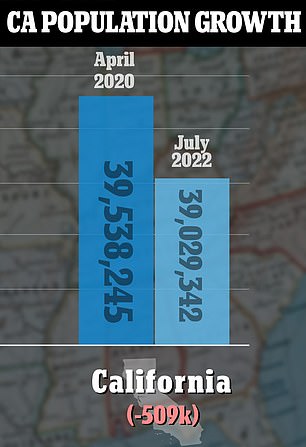

California has seen a population decline of more than 1 percent since the start of the COVID-19 pandemic, with an estimated 500,000 people leaving the state between April 2020 and July 2022
California has seen a population decline of more than 1 percent since the start of the COVID-19 pandemic, with an estimated 500,000 people leaving the state between April 2020 and July 2022.
In the state where where once-a-year massive wildfires and treacherous mudslides threaten homes, the population dipped by slightly more than 508,000 since 2020.
San Francisco and Lassen counties experienced the largest population declines, at 7.1 percent and 7.5 percent respectively.
Deputy director of external affairs at the California Department of Finance, H.D. Palmer, told the Sacramento Bee that the shrinking population of the Golden State is a reflection of its ongoing housing affordability crisis.
‘If you talk to demographers, they’ll say that one of the factors is the cost of housing. And that’s continued to be a challenging issue for the state,’ he said.
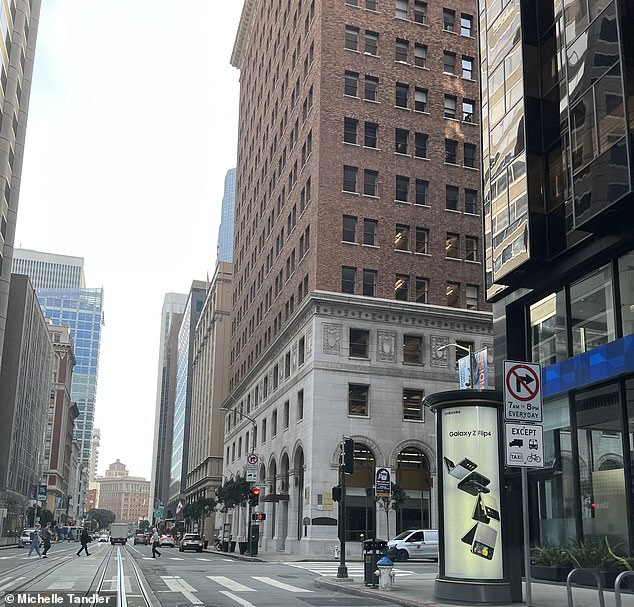



California has seen a population decline of more than 1 percent since the start of the COVID-19 pandemic, with an estimated 500,000 people leaving the state between April 2020 and July 2022. San Francisco has become a virtual ghost town, seen here pictured in October 2022
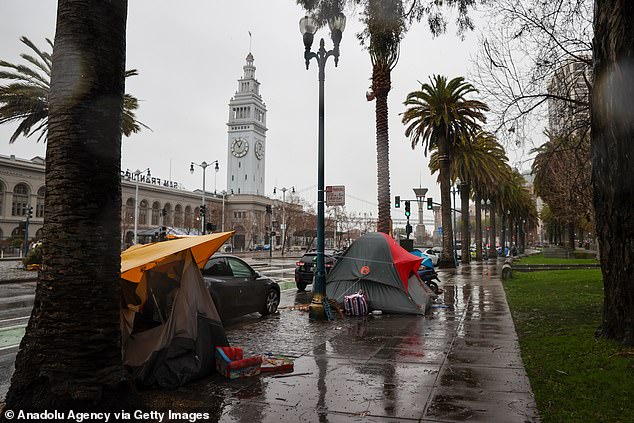





Homeless tents are seen along Embarcadero Street during heavy rain in San Francisco earlier this year
According to the Bee, in Sacramento – where the median household income in 2021 was $71,047 – it requires a household salary of around $145,000 to afford the median-priced house in the region.
A mass exodus has been occurring in the city known for its Silicon Valley since the pandemic struck in 2020, and many office spaces were abandoned.
That means the city’s streets have become increasingly dangerous, with many locals avoiding downtown’s sidewalks for fear of a violent encounter with one of the many vagrants and drug abusers who’ve taken over.
‘San Francisco went from being one of the hottest office markets in the country to one of the weakest,’ Carlisle told the San Francisco Gate, adding: ‘High tech workers were the ones who were most likely to say, ‘Well if I can work from any place, I’ll move some place where housing costs 90 percent less.”
Since 2020, the city has descended into a crime haven, where slash-and-grab thieves would break into stores and steal items in broad daylight and homeless people are seen doing drugs right on the streets — sometimes where students would walk home from school.
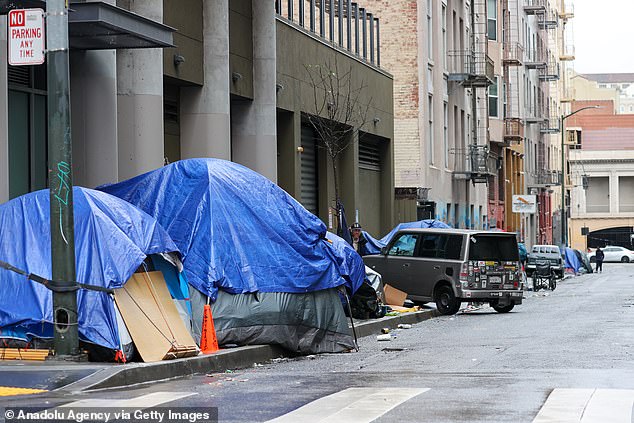





Homeless tents and homeless people are seen by the Polk Street near the City Hall in San Francisco
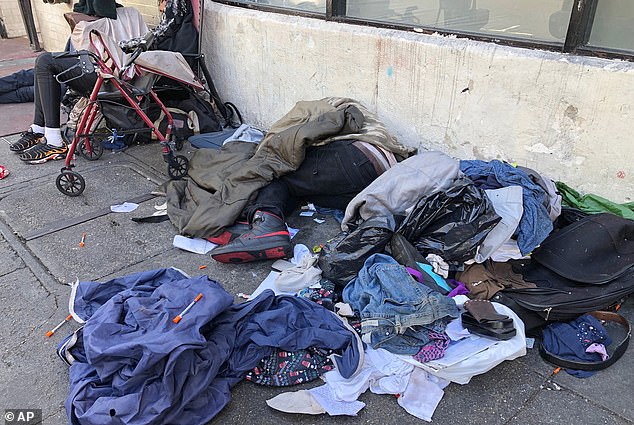





The streets of San Francisco – some of the most expensive in the country for taxpayers – remain littered with human feces and drug needles
That rampant increase in homelessness and crime has affected the ‘quality of life ambiance’ the downtown once offered, Carlisle said.
Making matters worse, he said, recent mass layoffs at tech companies have forced the middle-class workers to move.
However, despite the exodus from the City by the Bay, 19 of California’s 58 counties saw population growth during the same time period – mainly inland counties with lower housing costs.
The fastest-growing county was San Benito, which is located just south of the Bay Area.
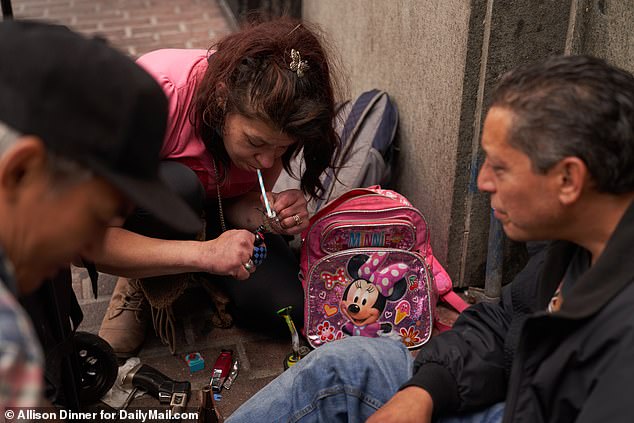





Experts say San Francisco’s growing homelessness problem and open air-drug markets are driving prospective buyers away from the area
Additionally, six of the nine fastest-growing counties were in Northern California, in areas surrounding Sacramento, with Amador, Calaveras, San Joaquin, Placer, Yolo and Yuba all grre by more than 1.5 percent.
The information was gleaned from recent U.S. census migration data that shows that while 20 percent of new residents to these northern inland counties came from nearby Sacramento County, about one-third came from the Bay Area.
Outside of Sacramento County, Alameda, Santa Clara, and Contra Costa counties were the top three counties of origin for these residents at 11%, 6%, and 5%, respectively.
Cheaper housing prices are the main reason why people are moving inland and remote work flexibility has made it easier for them to keep their jobs in the Bay Area while living elsewhere.
‘The thing that’s been changing in California a lot over the last few years is the really remarkable cost of housing in California as a whole, but also in the Bay Area in particular,’ said Eric McGhee, a demographics researcher at the Public Policy Institute of California to the San Francisco Chronicle.
‘That’s liable to make people want to try and figure out an arrangement somewhere cheaper, that’s preferably not too far away from where they were before if they can help it.’
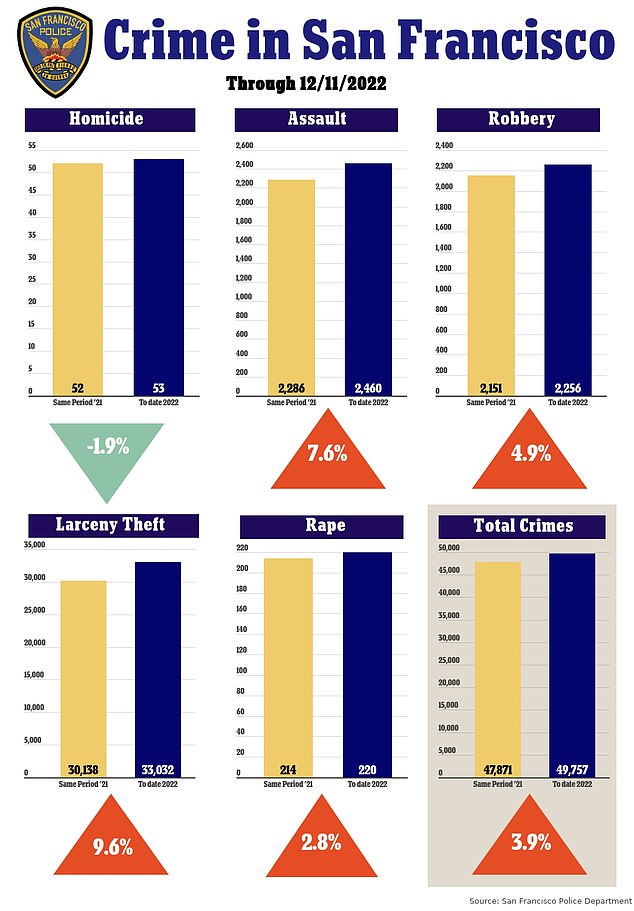





Earlier this month, the Democrat Mayor of San Francisco London Breed said she is requesting nearly $30 million in additional funding for the city’s police force.
The San Francisco Police Department has encountered rising overtime costs for current officers as the force is experiencing a shortage of workers.
Between 2021 and 2022, the department saw a 121 percent increase in total overtime, according to KPIX.
SFPD officials have also been making targeted attempts to address crime in certain pockets in the city which are prone to incidents.
‘We have been working hard to address serious public safety challenges in San Francisco, but we need our officers out on the street,’ said London Breed in February.
The San Francisco Police Department is currently experiencing a shortage of 541 officers.
‘While we are working on strategies to address our staffing shortages, we can’t wait to ensure our officers are able to provide the basic services our residents deserve and that our prosecutors can hold drug dealers and repeat offenders accountable,’ Breed said.